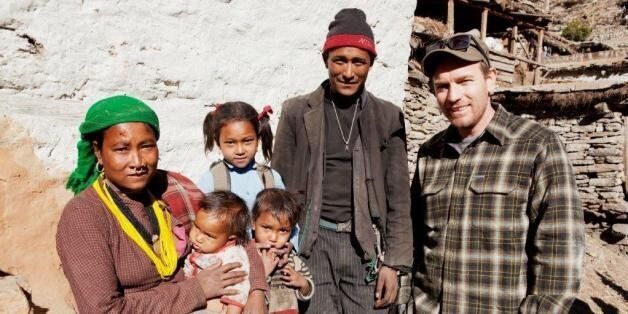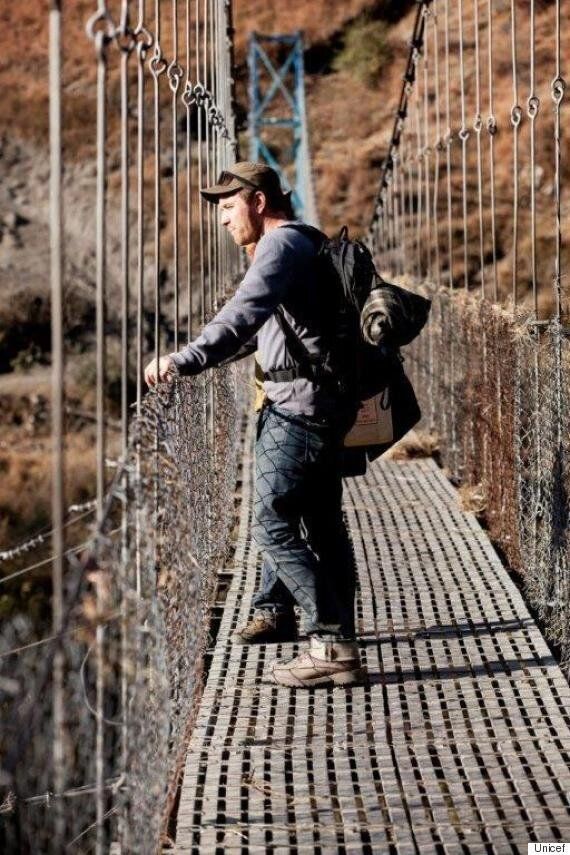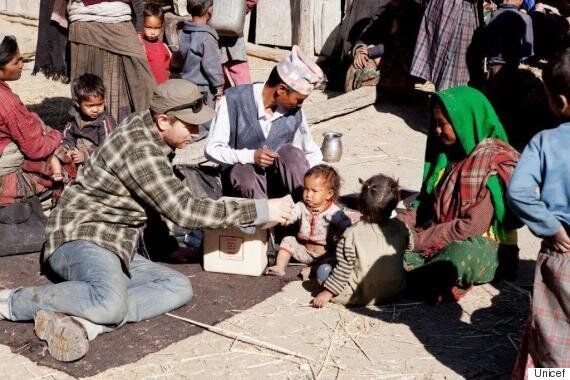
This week marks one year since swathes of Nepal were devastated by a 7.8 magnitude earthquake killing almost 10,000 people, flattening entire villages and leaving 3.5million people homeless.
Watching the news, I don't think any of us could fail to be moved by the devastating scenes we saw in the aftermath of the quakes. To be hit by one so strong was devastating, to be hit by a second just a few short weeks later, as recovery efforts were gathering pace, was almost beyond belief.
I have a close bond with Nepal. When I was filming the BBC documentary The Cold Chain I had the chance to spend some time with Unicef there. Following the path of a vaccine, we travelled from India up to Kathmandu, driving west to Nepalgunj, taking a hair-raising flight to Talcha before finally hiking to the tiny village of Luma.
It was a journey I'll never forget, and one that really illustrated to me the lengths that Unicef will go to reach every child in danger, no matter where they live.
Almost five years have passed since I visited Nepal, but the memories of the children and families I met there remain with me. Watching the news last year it was devastating to think that in and around Kathmandu many of the children I met had lost their homes, their schools, and even loved ones.

Ewan in Nepal
In the days following the earthquake, despite the snow and freezing temperature, families were forced to sleep outside, scared to go indoors because of the damage to buildings and the threat of aftershocks. I remember spending one night in a tent in Luma, and even with a sleeping bag and several layers it was an incredibly cold. But after the earthquakes many families had no choice but to sleep out in the open.
The earthquakes not only destroyed their homes and their schools, but left millions of children scared and in danger. They needed shelter; food, water and medical supplies, and also support to deal with the traumatic events they had experienced, and the chance to get back to school as soon as possible.
Unicef was there, on the ground in Nepal, when the children of Nepal needed them most, as it has been for over 40 years. Unicef staff worked tirelessly to reach every child affected by the earthquake. Working to ensure that each and every one of the children affected were kept safe, and provided with the food, water and supplies they so desperately needed.
Unicef also worked with the Nepalese government to set up temporary learning centres. Evidence shows that children who are out of school for prolonged periods of time after a disaster are increasingly less likely to ever return to the classroom. Unicef helped set up 1,500 temporary learning centres after the earthquakes destroyed 34,500 classrooms. Since then, Unicef has continued to work with the government of Nepal and partner organisations to help children and families affected by the earthquakes begin to rebuild their lives, providing not only education but healthcare, nutritious food and clean water for thousands of children.

One of the reasons Unicef was able to react so quickly following the earthquakes was because of the Children's Emergency Fund. Whenever or wherever disaster strikes, the Children's Emergency Fund allows Unicef to respond rapidly to deliver life-saving food, clean water and health care, as well as crucial protection from violence and the chance to learn in safety.
Currently there are 59million children facing conflict, natural disasters and other complex emergencies in 50 countries across the world. In all of these emergencies children are some of the hardest hit - losing lives, families, homes and schools.
From children fleeing brutal conflict in countries like Syria, to those whose homes are destroyed by natural disasters like in Nepal one year ago, to families and communities at risk from the Zika virus, there's never been a more challenging time for children. By donating to Unicef UK's Children's Emergency Fund today, you can help Unicef reach these children - no matter what.
This post first appeared in today's Metro.
